Peter Simon, a longtime contributor to Martha's Vineyard Magazine and prominent figure in the Island community, died November 18. In this 2016 article he reflected on his extraordinary life and his life's work: documenting in photographs the people he met, the things he saw, and the places he loved most. We extend our sincere condolences to his family. - MVM
_________________
Peter Simon stands in front of his closet looking like a man about to go on a blind date, excited but also worried about who and what he might find across the dinner table. The answer is himself.
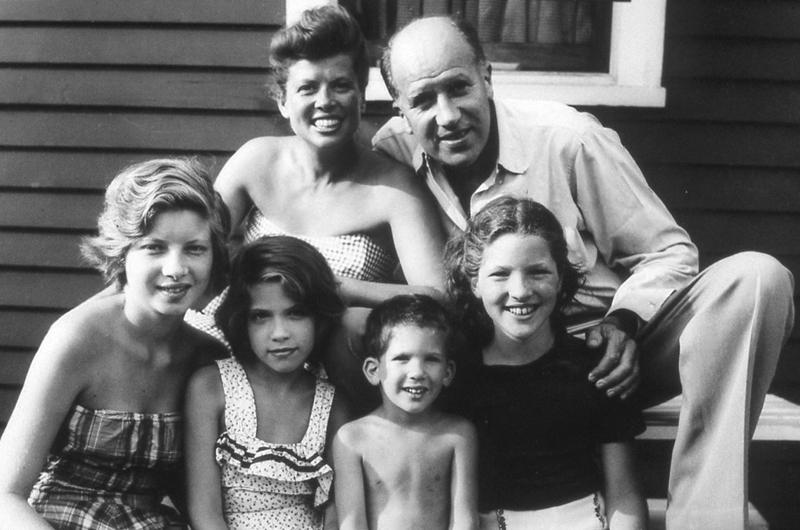
The closet is in the basement of his home in Chilmark. It doesn’t contain clothes, old coats, or his kid’s long forgotten Legos. It contains photographs that Simon has shot over the course of his entire life. There are thousands of them, or rather tens of thousands, arranged neatly (sort of) in DVDs, albums, sheets of negatives, folders, and files. They fill shelves that cover the walls. There are also Peter Simon calendars, lots of calendars, dating back to 1988 when he created his first one.
“You see what I’m up against,” he says with a sigh. “I’ve got so much to choose from. It’s like a jigsaw puzzle that I’ve got to figure out.”
It’s late March, a warm day outside, but who can tell from the basement, which is where Simon will spend much of the next three months. His deadline for choosing more than 500 or so photographs out of his entire collection of Vineyard shots is the end of June. It is a hard deadline too. Simon has decided to create his magnum Vineyard opus, a huge coffee table book of his best and most representative shots taken on the Vineyard, and unveil it with an opening and celebration at his gallery in Vineyard Haven in early August. But to have the book ready by then, he has to get it to the printer on time.
At sixty-nine, Simon is many things: a hugger and a hippie; a deejay; lover of nude beaches and barefoot golf; brother of Carly; loyal friend, husband, and father; gallery owner. But mostly he is a photographer. That is who he is and how he has traveled through life, documenting who he met, what he saw, and the places he loved.
Simon moves back and forth from his closet full of photographs to his computer, where his more recent work resides along with the work from the past he has transferred to digital. At the computer he scrolls through the images, trying to keep the throttle down to move quickly and find his most treasured Vineyard shots, but again and again he pauses and leans forward to get a closer look. In a sense, the pictures are like those marks on the wall kids have, denoting how much they have grown each year, so that when the wall is looked at, the journey of growth can be absorbed literally.
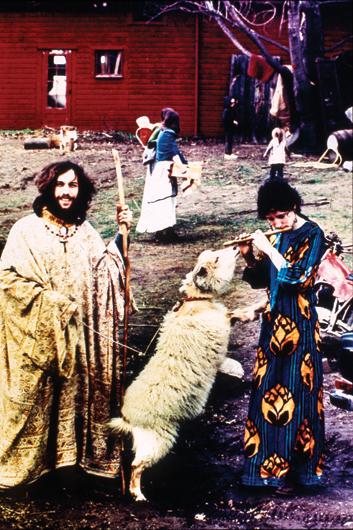
There are personal shots of his family, his parents and sisters, mixed in with iconic images of rock and rollers: Aretha Franklin, Jerry Garcia, Bruce Springsteen, Robert Plant. The 1960s and early 1970s flash by in shot after shot of political protests, love-ins, the counterculture movement, spiritual teacher Ram Dass – the list is long and beautiful.
Most of these images will not make it into the book as they were shot off-Island when he was a younger man, but they begin to tell the story of who Peter Simon was and is today.
Simon was born into privilege, he freely admits. His father, Richard Simon, was a founder of the publishing house Simon & Schuster and was what Simon refers to as “the big man on campus.” The family was wealthy, but more important, their home – at first a townhouse in Manhattan and later in Riverdale – was an ongoing salon of the famous and creative. Jackie Robinson was a family friend. Jimmy Durante stopped by occasionally, as did Richard Rodgers and Oscar Hammerstein, Herman Wouk and Benny Goodman.
Simon went to fancy prep schools – Fieldston and Riverdale Country – but says he felt like an outsider and was never comfortable as a child. He felt guilty about his privilege, which stood out even at the prep schools, and he was also skinny and socially awkward. But then his father gave him his first Polaroid camera and Simon’s world changed almost immediately. He became known as the kid with the eye and began taking pictures for every high-school publication he could. He was an average student but his portfolio got him into Boston University, where he continued to shoot for the college newspaper. He entered college in 1965, when America was undergoing a seismic cultural shift. And from his vantage point in Boston, Simon was able to capture much of it.
He hung out at music clubs like the Pyschedelic Supermarket, Boston Tea Party, and Paul’s Mall, taking pictures of the burgeoning rock scene. Jimi Hendrix came through, as did Ray Davies and Tim Hardin. He began traveling, capturing shots of The Who, Rolling Stones, Grateful Dead, essentially everyone. And because they were just starting out, Simon had full access. (In case you are wondering, which you probably are, this was years before his sister Carly made it big, and so Simon’s entry into rock and roll was of his own making.)
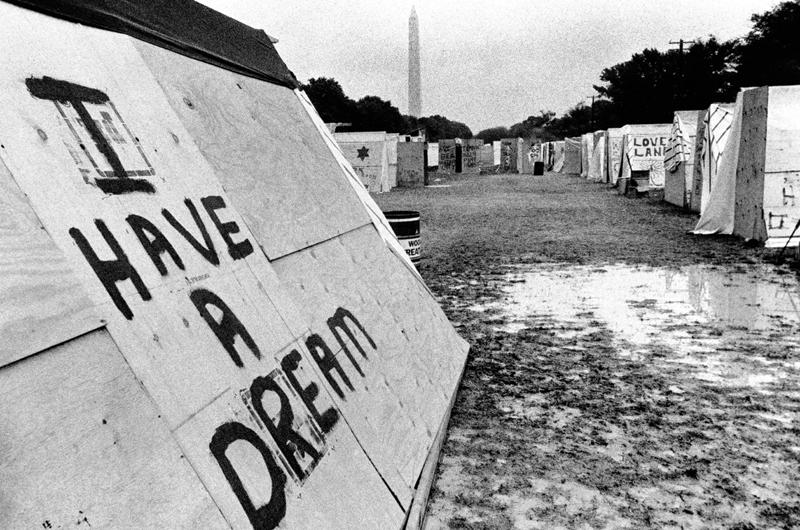
He began shooting for Rolling Stone, Life magazine, the Atlantic Monthly, and the Boston Globe, all while still a college student. His college newspaper was a radical one, and as he covered the political climate of the time he leaned far left, to the culture of peace and free love.
At the end of his college career, though, just when he felt he was poised to make the leap to an entirely new level, some friends convinced him that society was simply a mess – Nixon’s election, the assassinations of 1968, Altamont – and the real answer lay in turning your back on it. He bought some land in Vermont and started a commune there called Tree Frog Farm.
“It’s one of my main regrets,” he says of the decision to leave his career just as it was about to pop. He enjoyed some aspects of rural living, but “it was never really me. I wasn’t meant to live that rustically.”
After a few years of farming in the nude, partner swapping, and groovy togetherness, the rural utopia broke up. Simon sold the land in Vermont, and in 1972 bought a small shack in Gay Head. (For more on his life during this era, see the 2008 piece "Where Have All the Hippies Gone," for which he provided the photos.)
Simon says his early photographic influence was Henri Cartier-Bresson. “He was the first person to popularize 35 millimeter, just carrying a camera and shooting from the hip.” Simon still counts Cartier-Bresson’s seminal book of photography, The Decisive Moment, which was published by Simon’s father, as perhaps the most important thing to think about when shooting.
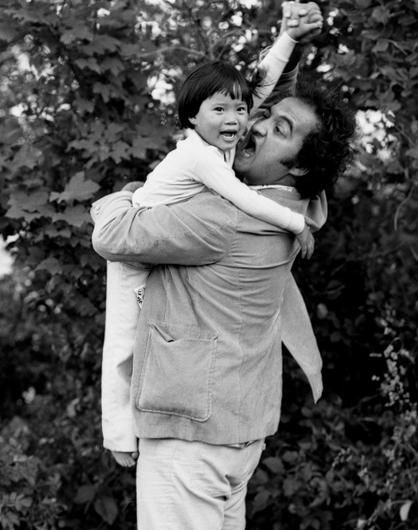
You need to know all the technical stuff, he says, mostly referencing how it was done in the old days before iPhones and digital cameras took over. “But to capture the decisive moment, you need to get in the right spot and wait until everything comes together. And the difference in moving one or two inches to either side will make the shot completely different.”
Simon also lists as major influences Robert Frank, who did a book called The Americans, and Bruce Davidson, a Vineyard summer resident who did a lot of New York City scenes. But his main influence, he says without hesitation, was his father, an amateur photographer who died when Simon was thirteen years old.
“My father, before he died, said ‘Son, save every negative you’ve ever taken,’” Simon reflects. “‘Believe me, even if it’s bad, save it.’ So I did. I never threw anything out because I listened to him.”
This photographic hoarding has served him well, and not just for his own project. Recently, the University of Massachusetts Amherst (UMass Amherst) purchased his archives. Soon after Simon finishes this book, representatives from the school will arrive to begin their own sorting process. The project has multiple leaders, one of them being Robert Cox, the head of special collections and archives at the university.
“Our philosophy is to document whole lives and whole communities,” Cox says. “We are not just interested in a photograph of Robert Plant; we are interested in providing as much context as we can.”
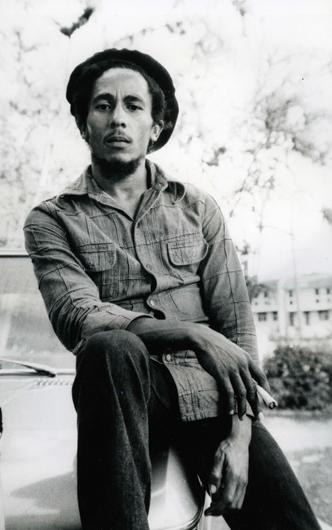
This means showing the development of the photographer to help inform both the images created and how the artist interacted with the times. Cox says they will most likely use about 3,000 images at least, which will be posted on the university’s website, scua.library.umass.edu, after the digitization process is complete.
“They want every single picture I’ve ever taken,” Simon says incredulously. “Every mistake, everything. You know, I started in 1960 so there is a lot of crap.”
Simon’s book is titled Martha’s Vineyard – To Everything There Is a Season, a nod to Ecclesiastes and the song “Turn! Turn! Turn!” written by Pete Seeger and later made famous by the Byrds. It contains mostly large shots, the best of the calendar landscapes, along with people from his extensive Vineyard collection. There are also several subsections that Simon calls panoplies. These are made up of groups of smaller images to illustrate a subject or theme, such as summer people, Islanders, storms, or seasons. There are introductory essays by novelist Geraldine Brooks, Jan Hatchard of Martha’s Vineyard Community Services, and his old friend the rock-and-roll biographer Stephen Davis.
The book as a whole is a journey through Martha’s Vineyard during the last half-century, a place Simon has been coming to since he was a baby. He knows every nook and cranny of the place, from eating sand as an infant on Lucy Vincent Beach to stalking its trails, sunsets, and people with a camera, both as a young man and an older man.
“I got hooked on the Vineyard early on,” he says. “The smell of the grass, the sand, the ferry, the little yellow lines in the road.”
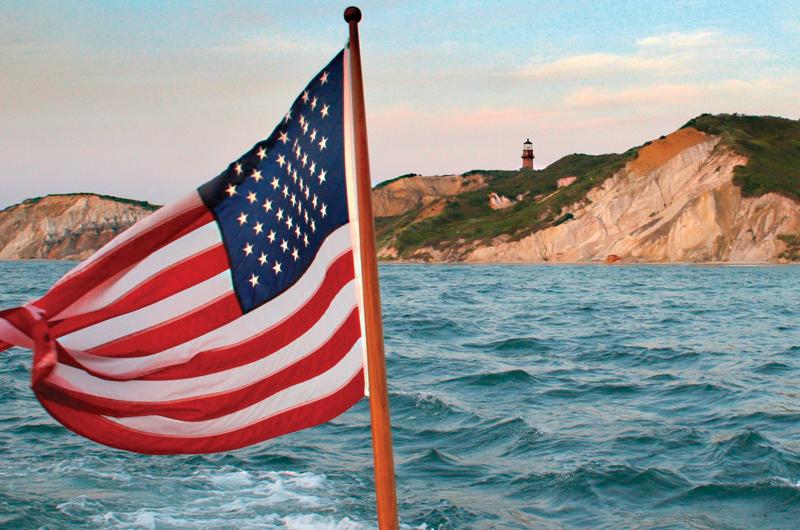
Simon’s Vineyard work began in earnest in the early 1970s, when he started freelancing for the Vineyard Gazette. At that time he was still traveling the world capturing iconic images of rock and roll and only spending summers on the Vineyard. But when his son Willie was born, he and his wife Ronni moved to the Island full time.
“I was trying to be a freelance photographer against the trade winds of New York and Boston,” he says. “But it just wasn’t me, and I had the Vineyard in the palm of my hand so we moved here.”
He began shooting regularly for Gazette editor Dick Reston.
“Dick would say, ‘Simon, go out and take a picture of the dump on Chappaquiddick and get really gritty pictures of glass with sunlight shining off the glass. We’ll do a whole dump essay.’ I’d say great and we did it.”
While with the Gazette, Alison Shaw began working as the art director and the two remain good friends. “I’m wild about her,” Simon says. “I think she’s fantastic.”
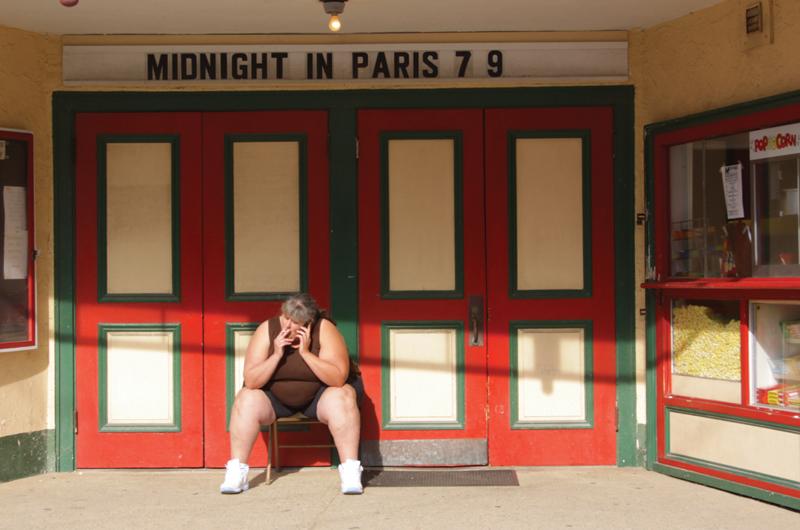
He created On the Vineyard in 1980, the first in a series of three books that came out in each subsequent decade. A few years after the publication of On the Vineyard, Ann Nelson, then the owner of Bunch of Grapes Bookstore, suggested he do a calendar. He could corner the market, Simon remembers her saying.
“And she was right. I thank her to this very day for the idea.”
The first Peter Simon calendar came out in 1988 and he hasn’t missed a year since. Nor have many of his customers, for whom getting the new calendar is an annual ritual.
Looking at so many images of the Vineyard in all her glory, one might make the conclusion that Simon’s life on the Island has been one of endless beauty, a kaleidoscope of sunsets and perfect beach days. But life, like photography, is always a combination of light and dark.
In the early 2000s Simon began work on his photographic memoir I and Eye, essentially the story of his life as a rock-and-roll photographer and his time during the hippie movement. The project brought him back to his roots, and his soul was once again connected to the 1960s – peace, love, and hope for the world. But the book’s publication coincided with the attacks on the World Trade Center and the subsequent war with Iraq. Simon was devastated, feeling as if everything he had fought for and chronicled during his life had been derailed by hate and anger. He became depressed and began drinking heavily.
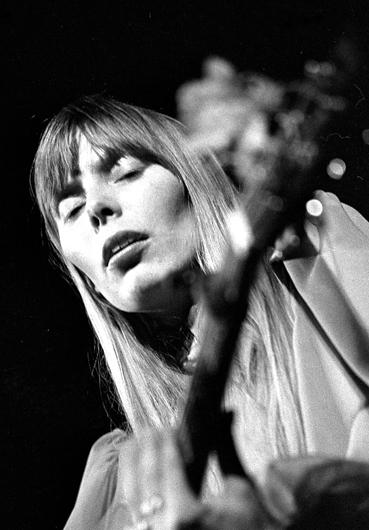
“I had always been a weeder but not a drinker, maybe a glass of wine or two,” he says. He quickly made up for lost time, getting four DUIs on the Island and then spending time in the Edgartown jail.
With the help of his wife and the community, he slowly pulled his life back together. He spent six months in rehab in Florida and then lived at Vineyard House, the Island’s halfway house for those in recovery. “I lived there for three months before Ronni would let me back,” he says. “She was like, ‘How can you betray our family like that?’”
Simon has been sober since 2004, and for two years he did a radio talk show called Recovery Road, trying to help others by telling his own story.
Ronni and Peter were married on July 9, 1977. When asked what it has been like to be married to Peter for nearly forty years, Ronni smiles.
“He’s high maintenance,” she admits. “When I travel with him, it’s like traveling with a child. I give him his ticket and he loses it, that sort of thing. But one thing is for sure, I’ve never been bored. He always makes me laugh.”
After Simon got sober he returned to his work, shooting on the Island and mentoring students. Then, in 2008 he and Ronni decided to open a gallery on Main Street in Vineyard Haven. The place would be a showcase for his work and Ronni’s, too. She made jewelry and later began creating large art installations, one of which covers one side of the Capawock Theatre in Vineyard Haven.
The gallery feels like an extension of their home: comfortable, casual, and a place to just hang out and talk or sit down on the couch and chill. Over the years, many visitors to the gallery suggested that Simon do another book, mostly of his calendar images. But he always said he didn’t have the time. Then, last year, he went to the hospital to check out what he thought was a stomach obstruction. The doctors found no problems with his stomach but detected a spot on his lungs, which turned out to be cancer. It had reached his lymph nodes and Simon began chemotherapy immediately. But it didn’t help.
“When I got the lung cancer, I said, ‘I better do this sooner rather than later.’ The prognosis is good, but what it has done is put me on the fast track.”
After more testing, the doctors discovered he had a rare form of lung cancer that does not have a cure, but for which there are treatments to slow it down and help the person feel better. Simon has had success with a different cocktail of chemotherapy drugs in pill form. He is not a cigarette smoker and this type of lung cancer is more common among non-smokers. Simon suspects it may have come from all the chemicals he used in his darkrooms over the years. Today, Simon is feeling healthy again with no side effects and the tumor is shrinking. But still, he is a man walking around with stage-four cancer.
He shrugs. The diagnosis is very real and he can’t help wondering how much time he has left. But he is thankful for his long relationship with Ram Dass, whom he traveled with extensively as a younger man, and who has devoted much of his teachings to the act of dying and how not to be afraid of death.
Simon also credits his alcoholism as a defining moment in how he thinks about death now. After one of his stints at a rehab facility off-Island, where he stayed dry for a full month, he began drinking almost immediately after leaving the facility on his way back to the Vineyard. By the time he hit the ferry, he was completely drunk but kept at it. He collapsed when the ferry docked in Vineyard Haven and was taken to the hospital, where he almost died from alcohol poisoning.
“They had to use those electric shock paddles to bring me back,” he says.
During this moment Simon says he had a near-death experience. Everything went white and he began floating upward toward a large bookcase. His favorite songs were playing and at the top of the bookshelf his whole extended family stood waiting for him. His father was at the front, greeting him and telling him how proud of him he was.
Then the electric current from the paddles kicked in and he was pulled back to life. “Suddenly everything went drab gray and there was some awful heavy metal music playing.”
So now, as Simon contemplates the end, he is not afraid. The other side doesn’t look so scary, and on this side of the river he feels he has put his things in order, providing for his family and ensuring that his work will live on, in his book and in the archives at UMass Amherst.
“My family is secure, my work is secure, and I can leave this world feeling I have completed my task, which is to leave the world a better place than I found it, as best I can.”

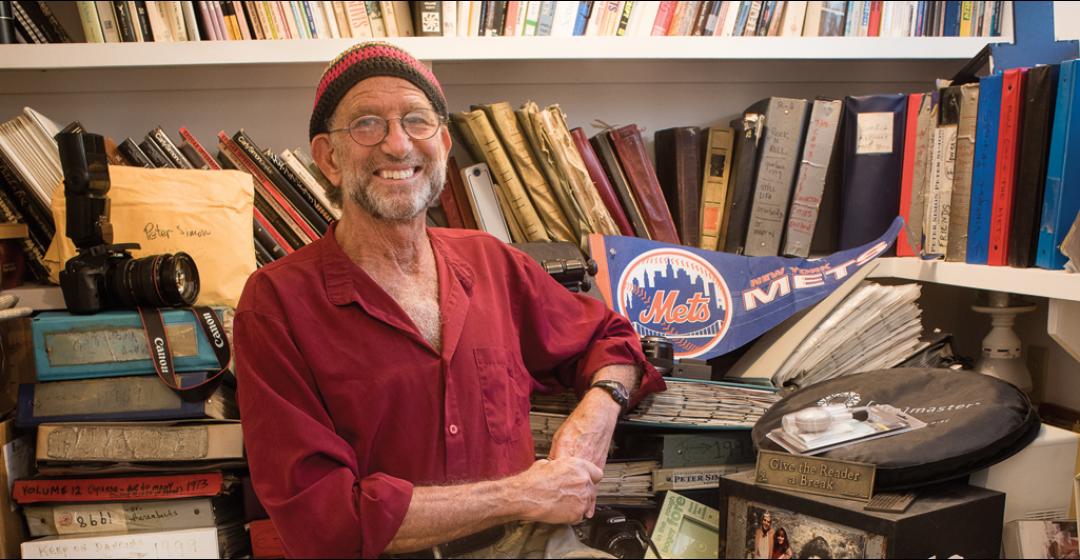


 11 comments
11 comments
Comments (11)